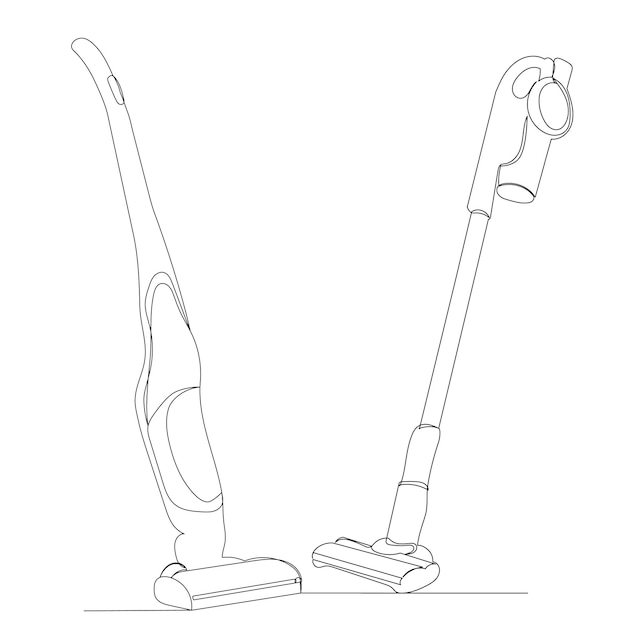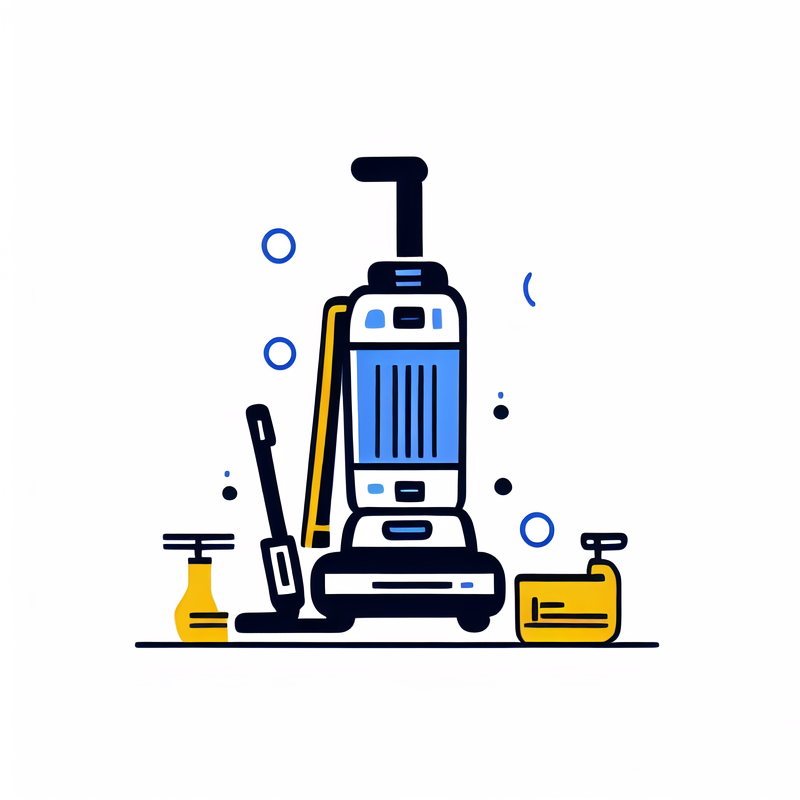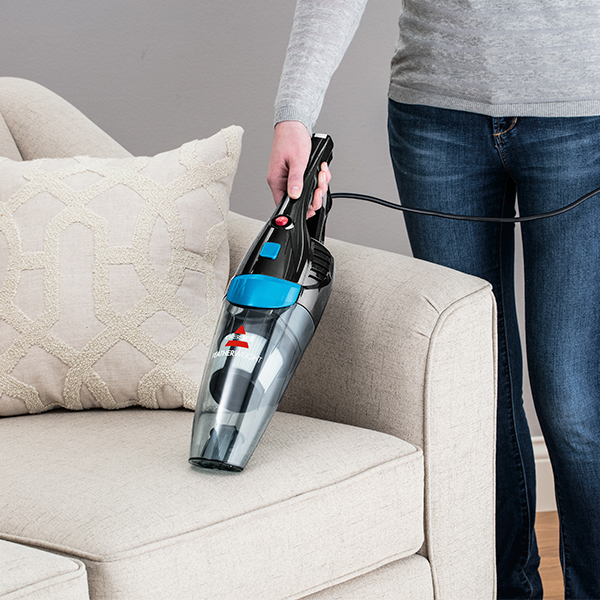Overview of the Vacuum Cleaner Drawing Process
Before diving into how to draw a vacuum cleaner, let’s understand the process. Drawing a vacuum cleaner involves several steps, from the initial sketching of basic shapes to the intricate details and final touches. Here, we outline the key stages in creating an accurate and realistic drawing of a vacuum cleaner. These steps will guide you through preparing your materials, sketching, refining, and applying the finishing touches to your artwork. Through this process, we aim to build your drawing skills and confidence, allowing you to capture the complexity of a vacuum cleaner with ease.

The first step is gathering all necessary materials for your drawing session. Next, you will prepare your workspace to ensure you have a comfortable and conducive environment for drawing. Starting with basic shapes is essential; it helps lay down the basic form of the vacuum cleaner without getting bogged down by details. Once the foundational shapes are in place, you’ll add intricate design elements that define a vacuum cleaner’s unique features. Refining your sketched lines will bring clarity and precision to the drawing, and adding depth will give it a three-dimensional feel. The final touches include detailed shading and texture techniques that will bring your vacuum cleaner drawing to life, making it appear realistic. Throughout the process, we’ll share tips on achieving textures and reflections that mimic real-life vacuum cleaners.
Every artist’s approach may vary slightly, but this process provides a framework that you can adapt to your style. Each step is crucial, and taking your time to understand and execute each one will be key to creating a piece you can be proud of. Keep the keywords ‘how to draw a vacuum cleaner’ in mind, as we’ll be referring back to them at each stage of the drawing process.
Essential Materials for Drawing a Vacuum Cleaner
Before you learn how to draw a vacuum cleaner, it’s crucial to gather the right materials. Having the proper tools can make the drawing process smoother and more enjoyable. Here are the essential materials you’ll need:
- Pencils: A range of pencils from hard to soft (H to B grades) is ideal for sketching and shading. You will use harder pencils for light outlines and softer pencils for dark shades.
- Eraser: An eraser is necessary to correct any mistakes or lighten areas for highlights.
- Paper: High-quality drawing paper with a bit of texture will hold the graphite well and allows for better shading.
- Sharpener: Keep your pencils sharp to achieve fine lines and detailed work.
- Ruler: A ruler helps you draw straight lines, particularly for the vacuum cleaner’s handle and base.
- Blending tools: Tools such as blending stumps, tissue, or cotton swabs help smooth out shading and create gradients.
- Colored pencils or markers (optional): If you wish to add color to your drawing, have a set of colored pencils or markers.
This collection of supplies will start you off on the right foot for your drawing project. Remember, the quality of your tools can impact the final result of your artwork. Keep your materials organized and within reach to maintain focus as you illustrate the vacuum cleaner.

Preparing Your Workspace
Preparing your workspace is a critical step in the process of how to draw a vacuum cleaner. A well-organized and comfortable space can greatly enhance your drawing experience and help you focus better on the task at hand. Here are a few tips to ensure that your workspace is ready for a productive drawing session:
- Clear Area: Start by clearing any clutter from your desk or drawing area. You need a clean space to spread out your materials.
- Proper Lighting: Good lighting is key. Preferably use natural light or a bright lamp that doesn’t cast shadows over your drawing.
- Comfortable Seating: Your chair should be comfortable for long sessions. Make sure it supports your back and allows you to sit upright.
- Accessible Tools: Arrange your pencils, eraser, sharpener, and other materials within easy reach. This prevents interruptions looking for tools.
- Inspiration Sources: Have reference photos or a real vacuum cleaner nearby to help guide your drawing.
- Quiet or Background Noise: Choose a quiet spot or play some soft music to keep your mind focused.
Once your space is set, take a moment to visualize the vacuum cleaner and imagine the basic shapes you’ll start with. This mental preparation aligns your focus with the drawing task ahead, setting a positive tone for what comes next in learning how to draw a vacuum cleaner. Remember, a well-prepared workspace is the foundation for creating great art.
Starting with the Basic Shapes
The journey of teaching you how to draw a vacuum cleaner begins with basic shapes. First, use light pencil strokes to sketch the core components: the canister, hose, and base. See the vacuum cleaner as a combination of simple shapes like cylinders, rectangles, and circles.
- Sketch the Canister: Start with an elongated oval or rectangle for the body of the vacuum cleaner. This shape forms the main canister.
- Draw the Hose: Attach a curved line or a soft spiral to the canister. This represents the hose, a crucial part of the vacuum.
- Outline the Base: Connect a flat rectangle at the end of the hose. This base supports the entire structure of the vacuum. Add small circles or wheels under the base for mobility.
- Handle and Controls: Include a straight line or a rectangle extending from the canister for the handle. Don’t forget to add small details like buttons and switches.
Keeping your lines light at this stage is important. You can always refine them later. This approach allows you to make changes easily without damaging the paper. Think of these basic shapes as the building blocks of your vacuum cleaner sketch. They set the stage for adding detailed elements in later steps.

Adding Detail to Your Vacuum Cleaner Sketch
Now that we have the basic shapes down, it’s time to add detail to our vacuum cleaner sketch. This will transform our simple shapes into a more recognizable and accurate representation of a vacuum cleaner. Here are the steps to follow:
- Define the Canister: Begin by adding curves and lines that depict the canister’s specifics. Look for vents, latches, or creases that are typical features of a vacuum cleaner’s body. Sketch these details lightly at first, and refine them as you go.
- Refine the Hose: The hose can have texture details such as ridges or a coiled pattern. Illustrate the flexibility of the hose with a series of connected, smooth arcs or curved lines. Remember, the hose often has a ribbed design for flexibility, so try to capture this characteristic.
- Detail the Base and Brushes: Most vacuums have various attachments and brushes. Draw these with attention to the unique shapes and connection points. Enhance the base with lines that indicate movement or bristles.
- Add Controls and Features: Include buttons, indicators, and power switches on the body of the vacuum cleaner. These small but important details will bring realism to your drawing. Use reference images if necessary to ensure accuracy.
- Sketch the Cord: If your vacuum cleaner model has a cord, make sure to include it in your sketch. Show the cord as a wavy line that connects to the canister, indicating its flexibility and length.
As you add these details, keep referring back to your reference photos or the actual vacuum cleaner to capture the design accurately. Fine-tune your drawing with clearer lines and shapes. Use various pencil grades to differentiate between hard and soft features. With patience and care, your sketch will start to look like a true-to-life vacuum cleaner.
Refining the Outline and Adding Depth
Now that your vacuum cleaner sketch has its details, it’s time to refine the outline and add depth to really make it pop. This stage is where your drawing starts to come alive as you enhance its realism. Here are the steps to perfect your vacuum cleaner drawing:
- Sharpen the Edges: Go over the basic shapes again. Use a sharper pencil to give crisp edges to the vacuum’s canister, hose, and base.
- Define the Depth: Add shadows to areas where light naturally falls off. This creates a sense of depth. Use the side of a soft pencil to lightly shade these parts.
- Create Contrast: Identify where the darkest shades should be and strengthen them. This contrast between light and dark areas adds volume to your drawing.
- Smooth Transitions: Use a blending tool to smooth the pencil strokes. This gives a more realistic finish, with gradual transitions between shades.
- Refine Small Details: Pay attention to smaller features such as dials, switches, and the texture on the hose. Make them stand out with careful shading.
- Review and Adjust: Step back to review your drawing. Make adjustments as needed to enhance the overall look of your vacuum cleaner sketch.
By focusing on clean outlines and depth, your vacuum cleaner will start to take on a three-dimensional appearance, distinguishing it from the flat sketch you started with. Keep the keyword ‘how to draw a vacuum cleaner’ in mind as you review your work; it helps ensure that your drawing remains as realistic as possible.
Finalizing the Details and Shading Techniques
After refining the outlines and adding depth, focus on the final details and shading techniques. This step polishes your drawing, giving it a lifelike appearance. Here’s what to do:
- Strengthen the Details: Look over your vacuum cleaner sketch. Make the tiny features crisper. This includes strengthening the lines on buttons and handles.
- Enhance Shading: Apply varying pencil pressure for different shading effects. Use soft pencils to darken the shadows under the vacuum and around the bristles.
- Highlight Textures: Convey textures like rubber grips or the cord’s fabric. Use light, even strokes for rubber parts and tight lines for the cord.
- Create Highlights: Identify where light hits the vacuum the most. Use your eraser to lift graphite off these spots, creating highlights.
- Review for Realism: Check your drawing from different angles. Ensure that all parts have the right contrast and texture for a realistic look.
- Soft Blending: Use blending stumps to merge shades smoothly. Gradual shading makes your vacuum look three-dimensional and solid.
Keep practicing these shading techniques. Over time, this will help you master drawing textures and reflections. Remember to review your work and be open to making improvements. The keyword ‘how to draw a vacuum cleaner’ has guided you to this point, ensuring a comprehensive and realistic depiction of a vacuum cleaner.
Tips for Achieving Realistic Textures and Reflections
To capture the essence of how to draw a vacuum cleaner, mastering textures and reflections is key. Here’s how you can achieve these realistic details:
- Observe the Real Thing: Study an actual vacuum cleaner. Notice how the surface reflects light and how the textures differ on various parts.
- Use the Right Pencil: Match pencil softness to the texture you’re drawing. Soft pencils are great for dark, rough textures; harder pencils for light, smooth ones.
- Layer Your Shading: Start with light shading. Gradually build up to the darker shades. This technique gives you more control over the texture’s appearance.
- Apply Directional Strokes: For textured surfaces like brushes, use strokes in the direction the texture follows. This creates a more authentic look.
- Control Pencil Pressure: Adjust your grip to vary the darkness of your lines. Lighter pressure produces finer lines, while firmer pressure creates bolder ones.
- Employ Erasing Techniques: Use your eraser to create highlights and to soften areas that look too dark. It’s also useful for refining textures.
- Reflect on Reflections: For shiny surfaces, leave areas of high contrast. Combine stark white highlights with very dark shading to mimic reflections.
- Practice Consistency: Make sure the textures and reflections are consistent with the light source to look believable. Consistent shading ties your drawing together.
By following these tips and practicing regularly, you can enhance the realism of your vacuum cleaner drawings. Believe in your skills, and with each sketch, you will improve. Keep the process enjoyable, and let the outcome reflect your dedication.


